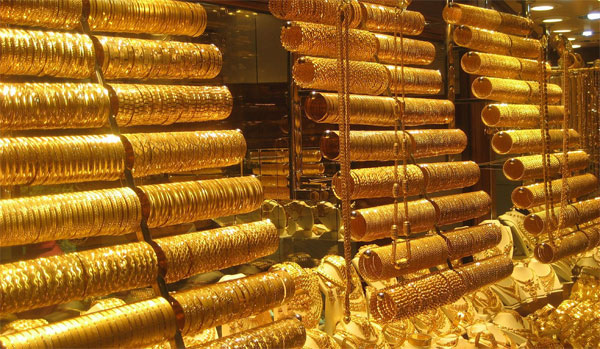When I talk about the Love Trade, India and China are frequently discussed since the two countries have been dominating world jewelry demand. Turkey’s love for gold, though, cannot be overlooked, as an estimated 5,000 tons have been accumulating in people’s homes for years.

Turkey is now offering incentives for people to store their gold in the bank instead. By acknowledging the hidden wealth of the Eastern European nation, this move will allow banks to lend more money and ultimately improve the country’s current account balance.
Turks’ Love Trade dates back more than 5,000 years ago, when gold jewelry was produced in Anatolia. That city still holds the world’s oldest jewelry art. Istanbul is the center for the production of gold jewelry and is also home to the Grand Bazaar which was constructed in 1461 and remains “the heart of the Turkish gold jewelry sector,” says the World Gold Council (WGC). Similar to India and China, Turks view the precious metal as both an adornment and a traditional form of saving. From a very young age, girls learn that gold is a wealth preservation asset, which helps explain why almost a quarter of those surveyed in Turkey today chose gold as their top investment choice, says the WGC.
You can see on the chart below how jewelry has historically been a majority of gold demand until just last year when half of gold demand came from investment, as gold coins and bars reached record levels, says the WGC.
In November 2011, ahead of the changes considered under Basel III, Turkey’s central bank said it would allow lenders to hold up to 10 percent of local-currency reserves in gold, according to the Wall Street Journal. As of March 2012, the central bank increased the percentage to 20 percent.

Now, retail investors can not only hold their gold jewelry, bars and coins in an account at a bank, but can also accumulate gold in accounts, with tax-free 24-carat gold transactions. The WGC says people can choose among gold deposit accounts, gold checks, gold credits, gold transfers, gold gram accounts and protected capital gold backed gold funds. Now, total gold deposits in the banking sector have reached an estimated $7.69 billion, according to the WGC.
I discussed last June how gold was being considered as a Tier 1 asset by the Basel Committee on Banking Supervision. The international banking supervisory committee helps ensure global banks have adequate capital, and the yellow metal was historically considered a Tier 3 asset with a net stable funding ratio of 50 percent. This means that banks’ gold holdings have historically been discounted by 50 percent of their current market value. I said at the time that upgrading gold to Tier 1 encourages banks to increase gold’s share of their reserves.
By making this change last year, Turkey is light-years ahead of other central banks around the world since the changes do not go into effect until January 2013.
- Bulenox: Get 45% to 91% OFF ... Use Discount Code: UNO
- Risk Our Money Not Yours | Get 50% to 90% OFF ... Use Discount Code: MMBVBKSM
Disclaimer: This page contains affiliate links. If you choose to make a purchase after clicking a link, we may receive a commission at no additional cost to you. Thank you for your support!



Leave a Reply